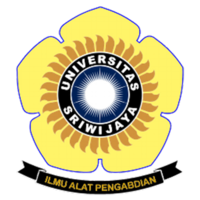Identifikasi Pengaruh Variasi Warna Ungu pada Fly Grill terhadap Kepadatan Vektor Lalat
Abstract
Sari, I. R., Sunarsih, E., Minarti, M., & Armawan, L.V. (2024). Identification of the effect of purple color variations on fly grill on fly vector density. In: Herlinda S et al. (Eds.), Prosiding Seminar Nasional Lahan Suboptimal ke-12 Tahun 2024, Palembang 21 Oktober 2024. (pp. 762–767). Palembang: Penerbit & Percetakan Universitas Sriwijaya (UNSRI).
Flies are insects that can recognize colors due to their phototropic nature, making them sensitive to specific wavelengths of light. This study aimed to evaluate the effect of various shades of purple on fly attraction. This research employed a quantitative experimental design with a post-test-only control group approach. The results indicated findings revealed a statistically significant difference between the light magenta and dark purple fly grill variations (p-value = 0.018; MD = 12.27500). The highest average fly density was found on the light magenta fly grill with 30.75 flies/block, followed by the light purple with 25 flies/block, and the lowest on the dark purple with 18.1 flies/block; meanwhile, the unpainted (wood) fly grill showed a density of 23 flies/block. The Specifically, light magenta purple attracted the highest number of flies, indicating its effectiveness as a trap color. Based on the research results, utilizing light magenta purple fly grills could enhance fly trapping efficiency. It is recommended that the use of light magenta fly grills be prioritized in fly control strategies in areas prone to infestation, such as landfills.
Keywords
Full Text:
PDFArticle Metrics
Abstract view : 143 timesPDF - 230 times
Refbacks
- There are currently no refbacks.

